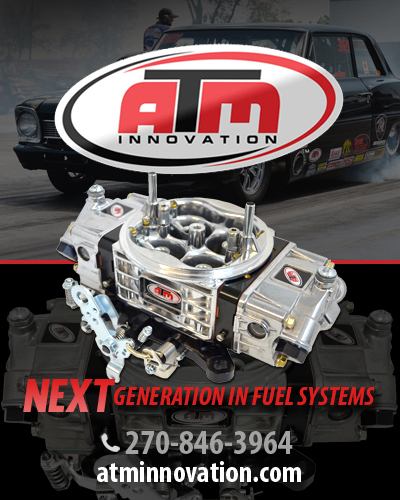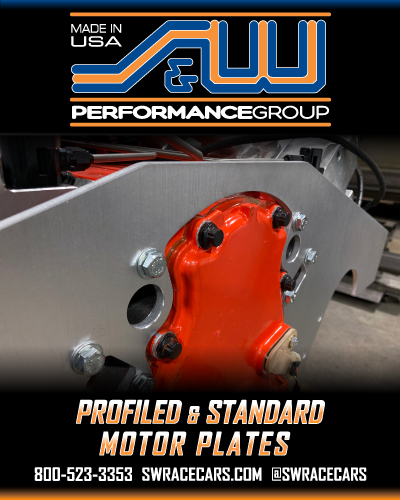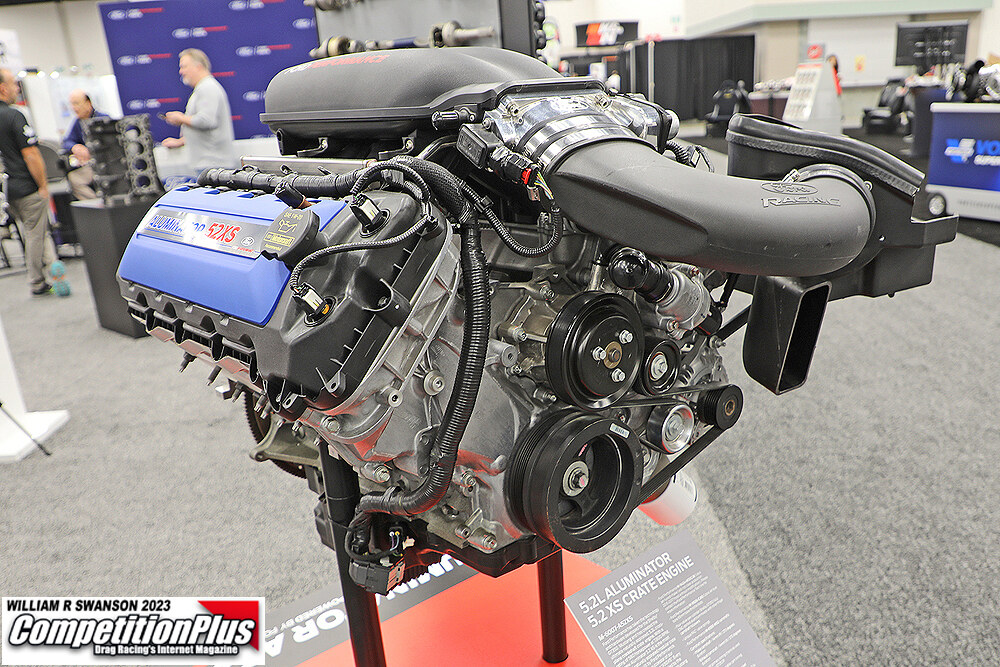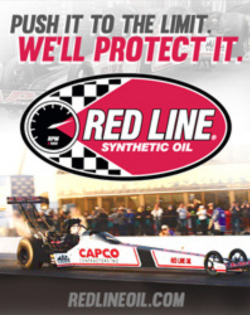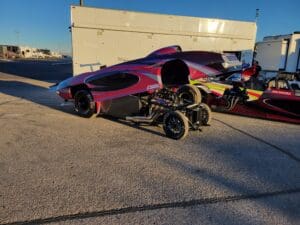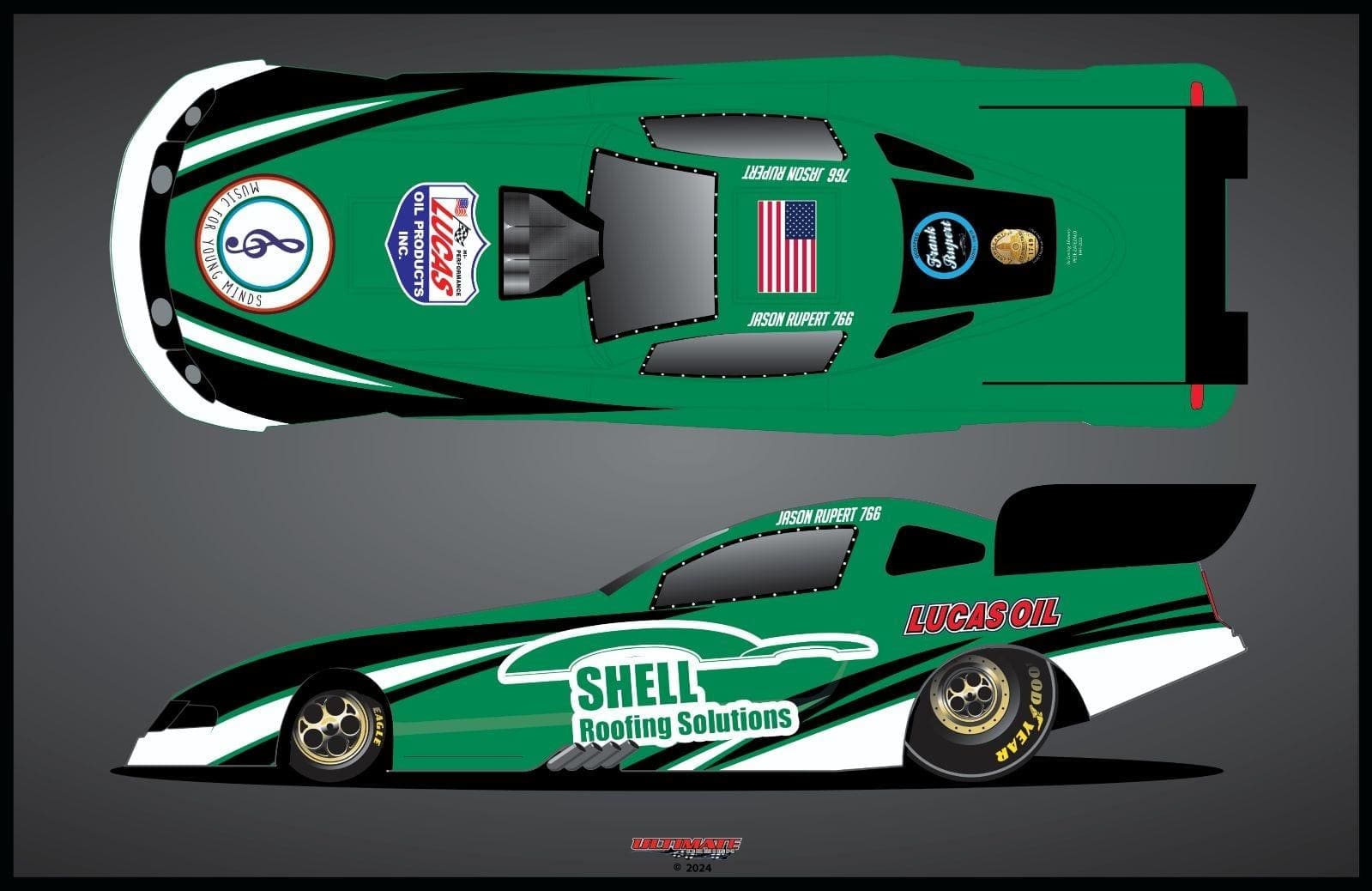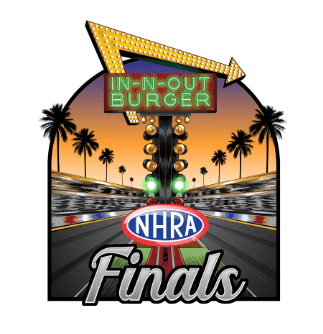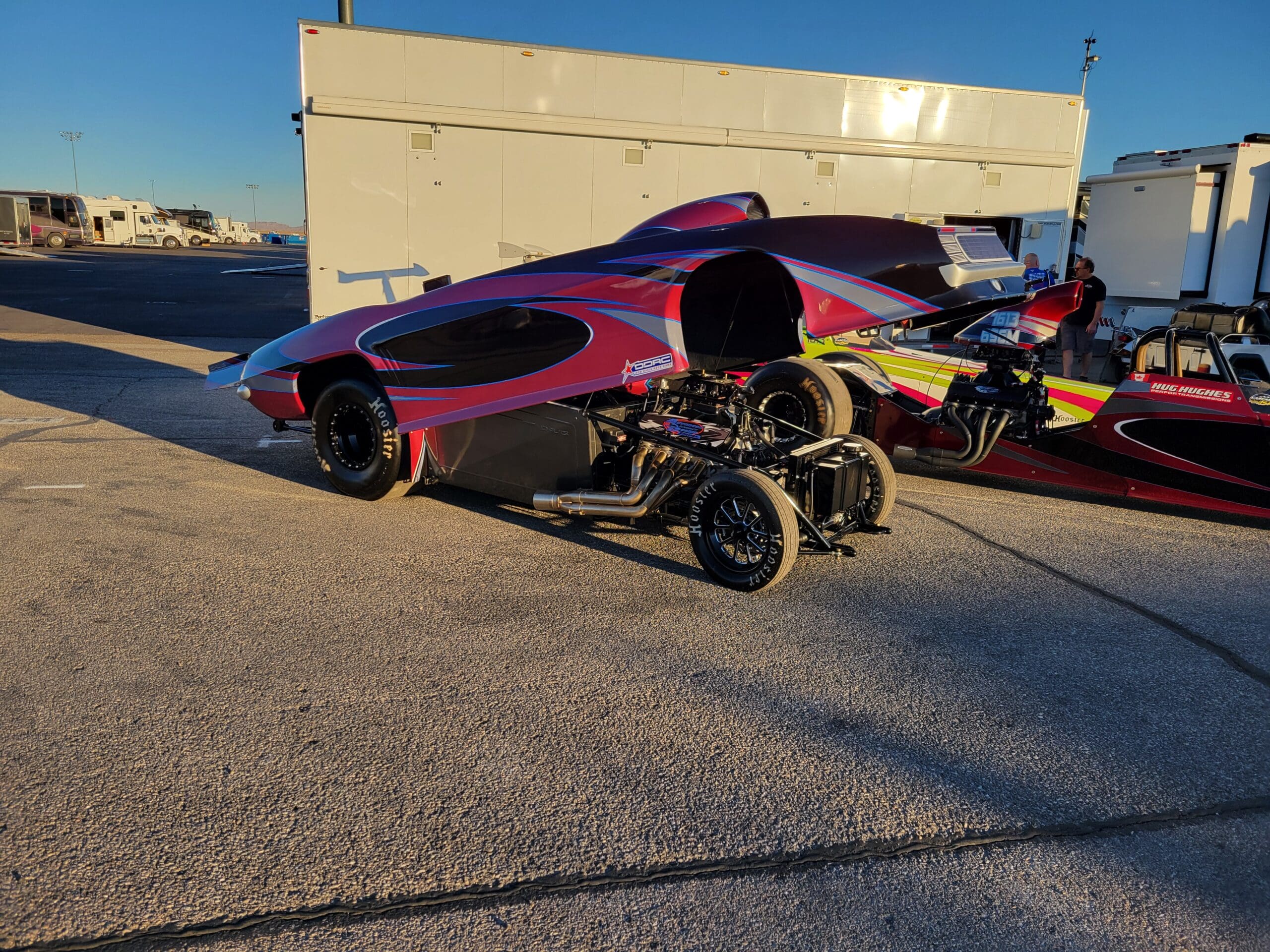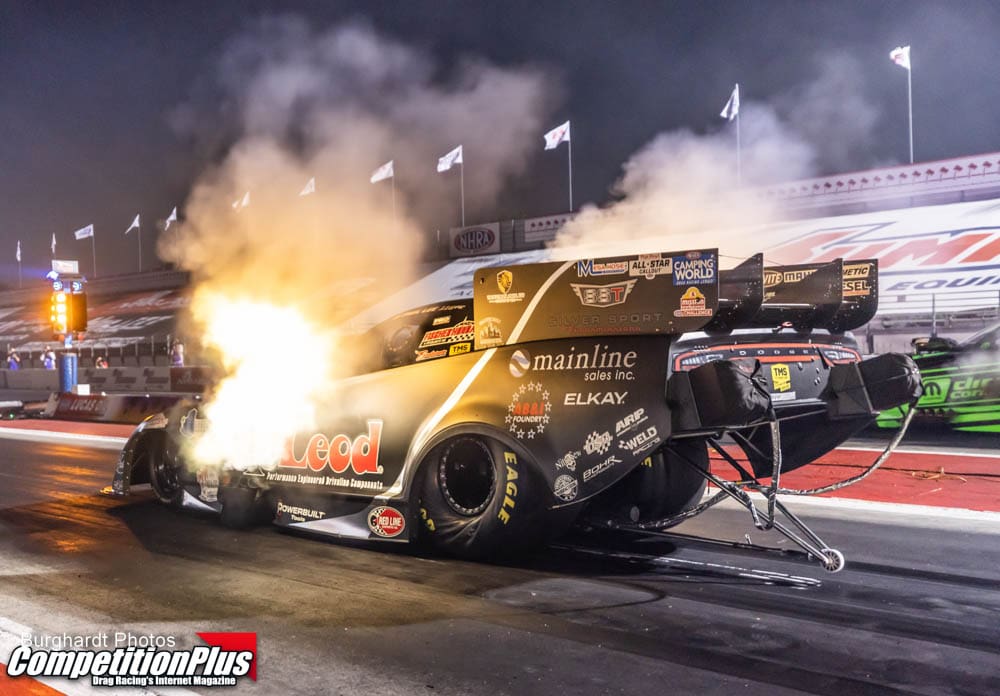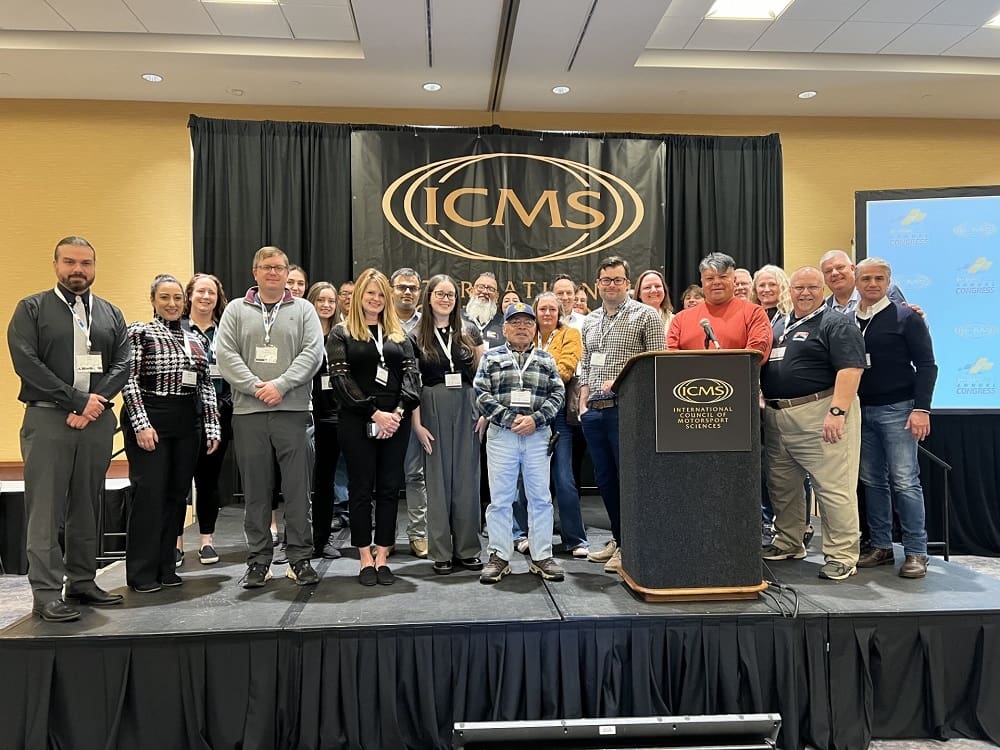Fridays
are what veteran chassis builder Tommy Mauney considers to be his “fill in the
blanks” days. Mostly he prefers to tinker with his custom motorcycles, a
diversion he felt would one day remove him from the rigors of building race
cars. This comes after he finishes up the final touches on customer orders and orders parts.
Mauney
is quick to point out that he still loves building award-winning race cars.
It’s the politics he could do without.
It’s
not the money that drives him, although it does go a long way towards paying
the bills. It is the love of his craft that pushes him to never give up.
“We
still have plenty to do,” Mauney said, referring to his ever-growing chassis
demands. “You have those people who have a preference for our cars and because
of that, it keeps us plenty busy throughout the year.”
 Fridays
Fridays
are what veteran chassis builder Tommy Mauney considers to be his “fill in the
blanks” days. Mostly he prefers to tinker with his custom motorcycles, a
diversion he felt would one day remove him from the rigors of building race
cars. This comes after he finishes up the final touches on customer orders and orders parts.
Mauney
is quick to point out that he still loves building award-winning race cars.
It’s the politics he could do without.
It’s
not the money that drives him, although it does go a long way towards paying
the bills. It is the love of his craft that pushes him to never give up.
“We
still have plenty to do,” Mauney said, referring to his ever-growing chassis
demands. “You have those people who have a preference for our cars and because
of that, it keeps us plenty busy throughout the year.”
Mauney
has been in racing for a long time – almost four decades. He’s seen the Pro
Stock division come full circle and that was followed by the Pro Modified
revolution in the 1990s. Mauney has even enjoyed a front-row seat for the
10.5-inch tire class that often runs on a lot of the local circuits he
frequents.
“Racing
has changed a lot,” Mauney said. “A lot of things have changed a lot since I
started in this industry. The one thing that will never change is that it will
never remain the same. You either have to change or you’ll find out that things
will leave you behind in a hurry.”
Mauney
prefers the local lights to the big screen scene of running national events. He
has two championships to his credit, one in the IHRA’s mountain motor Pro Stock
division and another in the highly touted Pro Modified division.
 Just
Just
to think, it all began when Mauney borrowed $200 from a finance company to race
in the 1974 IHRA Spring Nationals in Bristol, Tenn. The eighteen-year old
Mauney went on to finish runner-up to Roy Johnson in the Formula Stock
division.
Yes,
that’s the same Roy Johnson whose son Allen races competitively in NHRA Pro
Stock.
“I
still don’t know to this day if borrowing that money was the right thing to
do,” Mauney said, with a chuckle. “I’m having second thoughts about doing that
thirty-three years later.
“I
don’t know that drag racing is still the main thing in my life. If it was about
the money, I would have quit a long time ago.”
It
doesn’t take a lot to coax Mauney into talking about the time he raced Johnson
in the final.
“It
was fun,” Mauney said. “I think we both broke out .11 in the final round. I
think it went down to a couple of thousandths. At the time, I didn’t even have
a clue as to who Roy Johnson was. I still remember it like it was yesterday. I
was beside one of the legends and didn’t even know it.”
Mauney
ran a lot of roads throughout the Southeast racing in Stock and Super Stock
with the father-son team of Virgil and Ronnie Church. He later stepped up to
IHRA’s Modified eliminator before Reese & Anderson afforded him the
opportunity to go Pro Stock racing in 1985.
 Mauney
Mauney
took on whatever jobs he could in the early stages of his career. It’s not
commonly known that at one time Mauney painted a lot of race cars.
On
many instances, Mauney applied many Best Appearing paint schemes. He even
landed a few major gigs, applying the themes for Warren Johnson’s 1981 Monte
Carlo and the championship-winning Ford Fairmont for Bob Glidden. Mauney is
credited with also painting the entire Steve Bagwell fleet of legendary Super
Stockers.
“I
actually painted my first complete car when I was 14 years old,” said Mauney.
“I painted a local guy’s brand new Corvette and I was surprised that he trusted
me to do it. It really turned out good. If I had been smart about it, I would
have realized the paint shop was keeping the chassis shop afloat. I probably
should have stuck with that.”
Mauney
didn’t have a shop of his own at the time. He would often make house calls or
the client would rent a shop for him to paint their car. The enterprise grew
until he brought aboard a few body prep specialists and the operation
eventually gave way to the chassis business.
That’s
a business he’s run with the assistance of lead fabricator Dean Jonas. Mauney
is honored by the loyalty Jones has displayed over the years.
 “I
“I
think we actually did some of the first candy paint jobs around here,” Mauney
said. “We didn’t do it to a lot of fanfare. We just did the jobs and kept our
mouths shut.”
The
big stage lights don’t blind Mauney. He’s content to run local events.
“I
get just as much of a kick to run the local events like in Orangeburg,” Mauney
said, in reference to one of the pioneering South Carolina tracks on the
eighth-mile Quick Eight scene. “If I can still win local, it brings the same
big thrill as winning at Rockingham or Bristol. It’s the fact of being
competitive that fuels the thrill.
“You
can say that the level of competition is not as tough, but I found out that it
was just as hard to win a Quick Eight as it was at the nationals in 1995. I
don’t agree with the mentality that suggests the competition isn’t as tough.
It’s a lot more work now than it was then, but the same principle applies – you
have to get after it if you want to win.”
The
Mauney approach has not changed one bit. He remains low key and rolls with the
punches.
“I’d
just as soon remain on the sidelines or in the back of the room and watch
things unfold,” Mauney said. “I’ve heard all the bragging and those who talk,
but if you do well the world will know. They’ll tell each other and you won’t
have to.”













